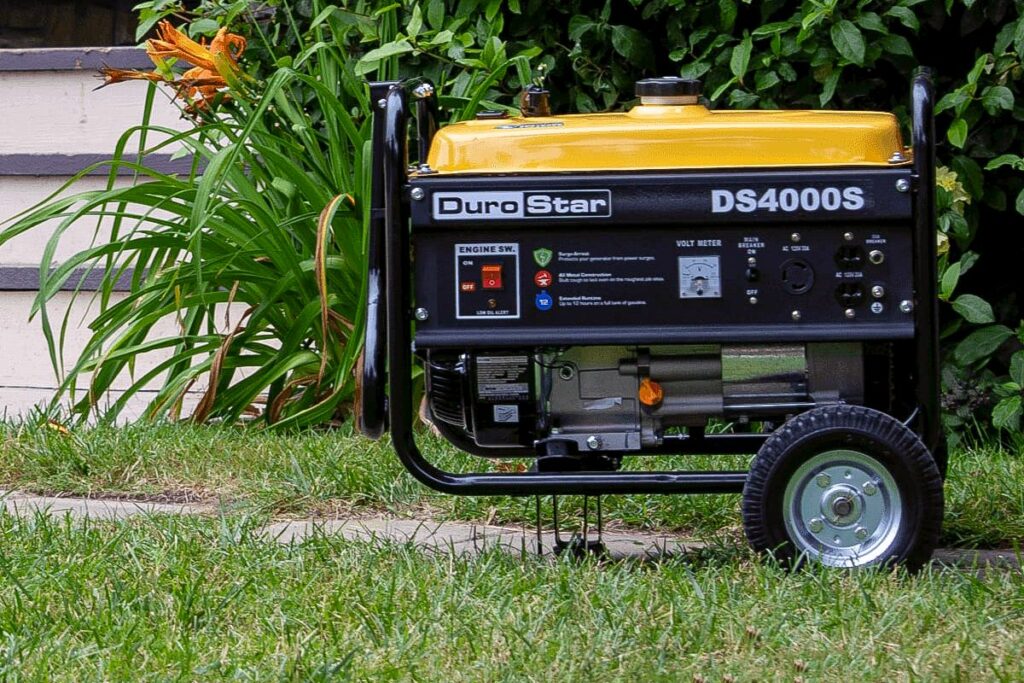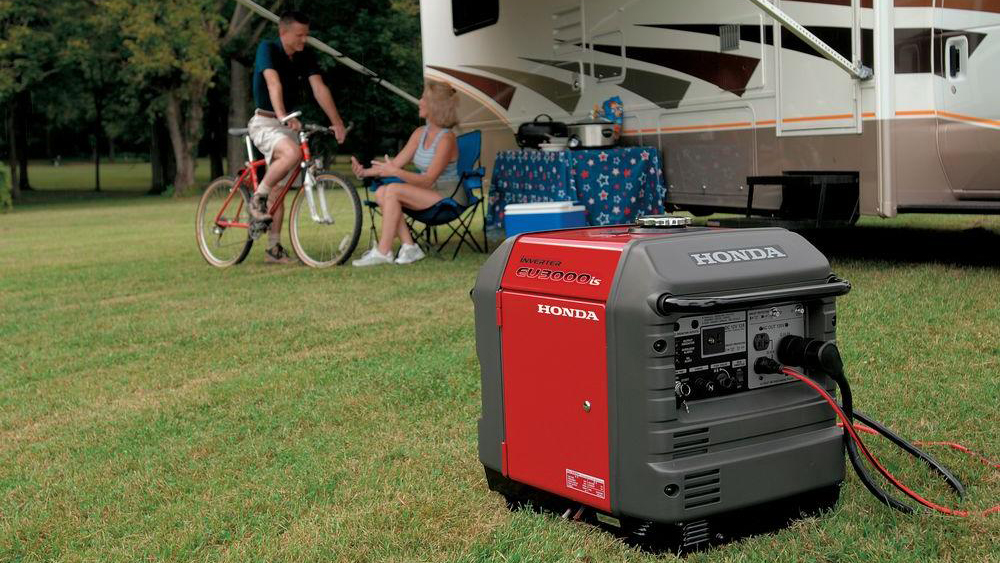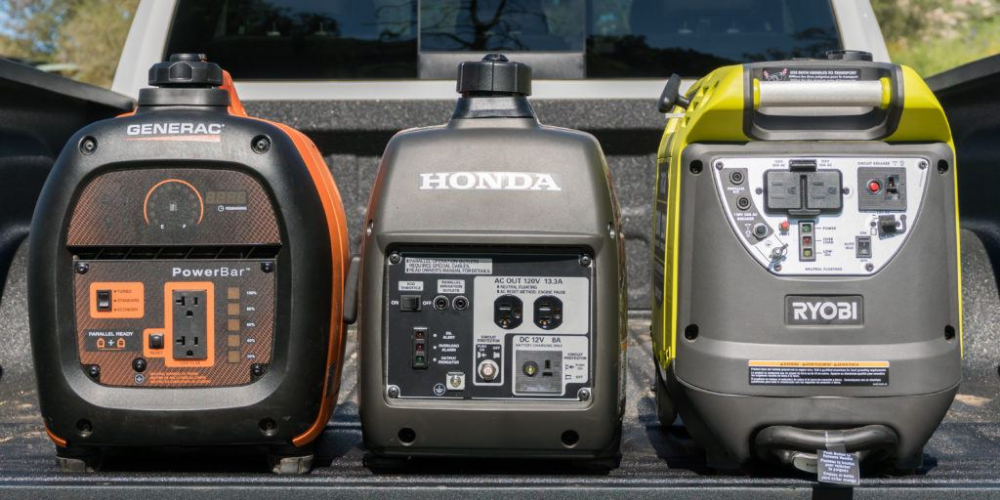A sudden power outage is a situation that would make many people cringe, even at the mere thought. Thankfully, power outages only occur occasionally and never for very long. However, you’ll still need to get your energy needs to be met while you wait for the utility to restore power.
This is why you need to know how to use a portable generator. While portable generators may generate less power than a pre-installed automatic generator, they are pretty mobile and can meet your immediate household needs. These include powering the bulbs, keeping the heater warm, and the groceries from rotting away in the fridge. Here’s how to get a portable generator running in no time at all.
Step 1 – Consult the Manufacturer’s Manual
 Every Portable generator comes with a detailed manual that allows you to get around the working basics. And you won’t need a degree to understand it either.
Every Portable generator comes with a detailed manual that allows you to get around the working basics. And you won’t need a degree to understand it either.
The manual gives you an essential overview of the peculiarities of the portable generator unit you are about to use. (For example, the amount of power it can deliver, appropriate ways to set up the connections, plus other safety precautions to put in place).
Once you’ve got the hang of how your unit works, it’s time to move on to the next step.
Step 2 – Complete Preliminary Checks
(Pro-Tip: Be sure to complete all these steps before switching on your generator.)
-
Move Your Generator Outdoors
This is a no-brainer. Portable generators run on fossil fuels (commonly gasoline, propane, or kerosene). The waste product produced by this kind of fuel is Carbon Monoxide.
When in use, your generator will emit CO through its exhaust (whether you think you see it or not). Carbon monoxide is poisonous, so be sure your generator is not working right inside the house.
You should also position the generator exhaust away from open windows or neighboring houses. Another reason to keep your generator outside is to minimize noise. Portable generators can get hot and noisy. However, avoid using your generator in the rain. Things may get nasty fast.
-
Check Your Fuel Gauge

Don’t run your unit on fumes. Depending on the kind of gas your generator is running on, you should be able to pick up sufficient supplies from a nearby gas station.
You should also check the oil gauge on the unit to determine whether you need to top it up or completely replace it. Black sludgy oil is an indication that what you need is a replacement. This is particularly important if your generator has been sitting unused for some time.
(Caution: Use only the recommended fuel for your generator unit to prevent unforeseeable disasters).
-
Inspect Your Air Filter for Dirt and Blockage
A blocked or dirty air filter may lead to your generator breaking down mid-use. You should be able to easily change or clean your air filter by following the manufacturer’s guide.
Also, make sure to run a dry, fluffy cloth over the unit to wipe it free of dirt or grease. Now, you’re ready to get your generator all powered up.
Step 3 – Switch on the Generator and Connect Appliances
-
Powering On
Look for the ‘circuit-breaker’ on your portable generator. Usually, it should be a small knob at the back of your unit. Just beside the ignition key. Make sure this knob is flipped “OFF.” Next, gently release the fuel valve to allow the gas to feed into the engine from the fuel tank.
(Skipping this step may result in your generator not powering at all or shutting down within a few minutes of action. You don’t want that).
Finally, switch on your generator. Many portable generators use an electric ignition system. So, all you have to do is turn the key. (If your ignition refuses to start, you should check whether the battery is charged.)
And voila. Let there be light! Well, not just yet.
You still need to let your generator warm up for a few minutes, then flip on the circuit breaker. Your power should be running. Now, you can get to connecting your appliances.
-
Appliance Set-Up
 Most portable generators come with outlets that allow you to directly connect your appliances. This can be done by using heavy-duty extension cords meant for outdoor use. All you need to do is connect your cables to the generator outlet and plug-in appliances you want to use.
Most portable generators come with outlets that allow you to directly connect your appliances. This can be done by using heavy-duty extension cords meant for outdoor use. All you need to do is connect your cables to the generator outlet and plug-in appliances you want to use.
One small caveat here, though. Whatever you do, do not backfeed.
Back-feeding is when you directly plug your generator into an outlet in the house. While this may indeed power up things (probably for a few minutes before disaster strikes), the consequences can be pretty serious.
The electricity generated can surge back through your connection into power lines. Ramped up by transformers, the voltage can hurt or even kill electrical personnel working hard to restore power to the neighborhood.
If your goal is to have an alternate backup power source, you should consider investing in a pre-installed automatic generator. You can consult a nearby electrical outfit to help you out with a switch system that allows you to transition between utility and your generator seamlessly.
Be sure to check your extension cords for tears or signs of exposure. If there are any, wrap an electrical tape around the region securely. (This is another good reason you should not use your portable generator in the rain, think electric shock.)
If your devices are not coming on after powering on the generator, switch it off for a moment. Then check your connections and the circuit breaker one more time.
(Safety-tip: If you ever need to refuel your portable generator, switch it off and allow it to cool first. Refueling your generator while it’s still working is dangerous. Gasoline splashing on the hot engine may lead to an explosion or a fire outbreak.)
Step 4 – Turn Off the Generator
Once you are done using your portable generator, it’s time to disconnect your plugged-in appliances and switch the generator off. Here’s the most effective way to go about this:
One, make sure to remove all your devices and appliances from the extension. Then disconnect the extension cord from the generator. (Or you can simply disconnect your devices and proceed to the next step. You can take care of the extension cords later.)
Two, flip over the circuit-breaker to ‘OFF.’ When you do this, electricity is effectively disconnected from your extension cords.
Next, close the fuel valve. Your generator will still continue to run for a few minutes on the fuel that’s already in the carburetor before powering off by itself. Doing this will help to keep the engine primed and ready for subsequent use. Finally, switch off the electric-ignition system and allow your generator to cool.

Step 5 – Store Away for Future Use
Clean your portable generator with a dry cloth when it has sufficiently cooled. Then keep it stored away in a shed or a small room outside the main building.
You should also check for oil spills and make a mental note of any repairs that need to be made. Now, carefully fold away your extension cords into a clean case or plastic bag.
(Safety tip: Do not keep cans of reserve fuel in the house, this can potentially lead to a fire hazard. Instead, keep them in a shed far removed from the main building).
You should also drain away any remaining fuel from the generator tank if you have no plans to use the unit again anytime soon. Now you know how to use a portable generator.
Conclusion
Getting your portable generator up and running should be a pretty simple task. Just remember to always follow the manufacturer’s manual, complete the preliminary checks before switching on your generator set and adhere to other safety measures outlined in this article.
